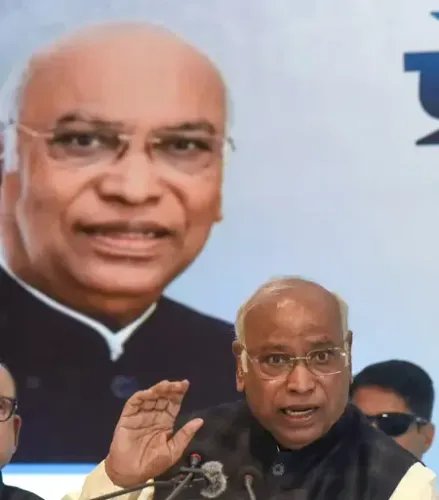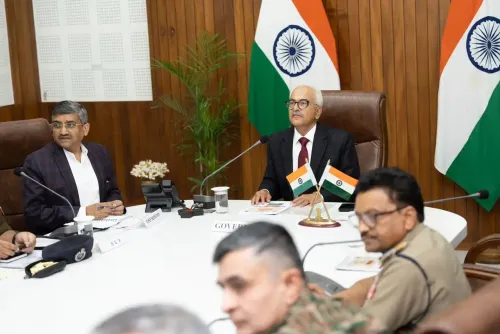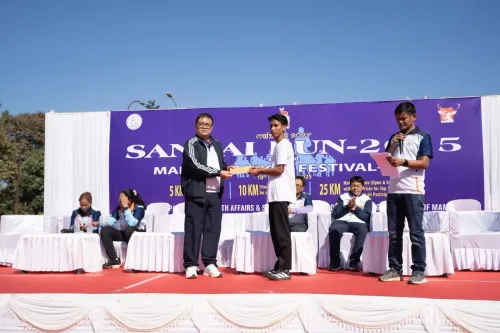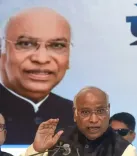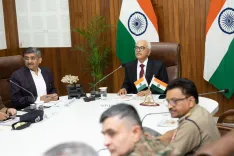Is China Orchestrating a Disinformation Campaign Following Operation Sindoor?
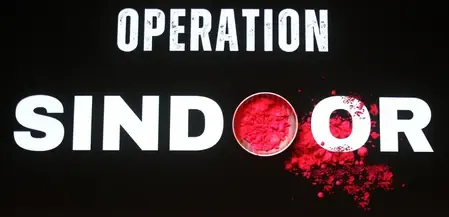
Synopsis
Key Takeaways
- China accused of leading a disinformation campaign.
- Fake social media accounts used to spread misleading information.
- India's Operation Sindoor targets terror installations in Pakistan.
- Growing asymmetry in India-China border negotiations.
- Dalai Lama's succession may strain relations further.
Washington, Nov 18 (NationPress) The US-China Economic and Security Review Commission, an advisory body established by the US Congress, has accused China of orchestrating a disinformation campaign in the aftermath of Operation Sindoor. This campaign is part of its Gray Zone tactics, utilizing fake social media accounts to disseminate AI-generated images purportedly depicting 'debris' from aircraft.
The commission stated, “China launched a disinformation initiative to obstruct the sale of French Rafale aircraft, promoting its own J-35s instead, by utilizing fake accounts to circulate AI images of supposed 'debris' from planes it claims to have destroyed.” This assertion was made in its annual report submitted to Congress.
The report also indicated that Beijing has “opportunistically” exploited the India-Pakistan conflict in May to showcase the sophistication of its weaponry, which is pertinent to its ongoing border disputes with India and its expanding defense industry ambitions.
In response to the Pahalgam attack in April that resulted in the deaths of 26 civilians, India initiated Operation Sindoor, targeting terror installations and military objectives within Pakistan.
In August, Indian Air Force Chief AP Singh disclosed that Indian forces had successfully destroyed five Pakistani fighter jets along with a significant airborne surveillance aircraft during Operation Sindoor.
Regarding India-China relations, the commission noted an “asymmetry” in how both nations are addressing the border dispute.
“China capitalizes on high-profile, well-publicized dialogues to achieve partial resolutions, aiming to pave the way for bilateral cooperation in trade and other areas while compartmentalizing the border issue without compromising its essential interests,” it noted. In contrast, “India seeks a sustainable resolution to border disputes.”
“In recent years, the Indian government has increasingly recognized the gravity of the threat posed by China at the border,” it emphasized.
The report suggests that the current terms of bilateral economic collaboration or border resolution agreements remain “largely conceptual,” with a lack of “specifics or follow-ups” from either party.
It also posited that the anticipated succession of the Dalai Lama is likely to create friction between the two nations.
“It remains uncertain whether the commitments made by China and India for 2025 are a temporary response to India's need to navigate tumultuous trade negotiations with the United States or if they signify a long-term shift toward normalization in bilateral ties,” it observed.
Following several months of bilateral discussions, Prime Minister Narendra Modi visited China in August for the Shanghai Cooperation Organisation (SCO) Summit, where he met with Chinese President Xi Jinping and Russian President Vladimir Putin.
In Washington, this development was perceived as India attempting to balance its relations after tensions with the United States escalated due to the imposition of 50 percent tariffs.
In recent months, relations between India and the US have stabilized, with expectations for the first phase of a trade agreement to be announced shortly.

